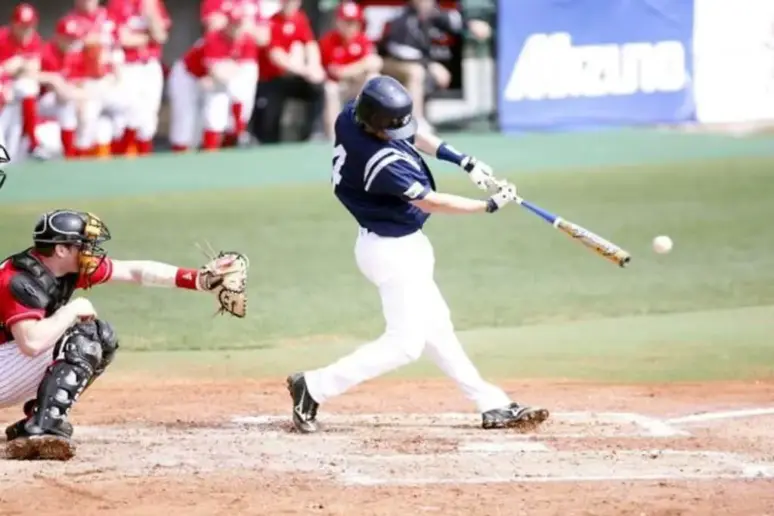Why Do Baseball Players Put Pine Tar on Their Helmets?
While watching baseball, you’ll often notice that players’ helmets look filthy or even damaged.
On the TV screen, plenty of helmets will appear to have a darkened area which from afar look as if it was burned.
Of course, it’s hard to believe that MLB players’ equipment is anything but in top-notch condition.
What you’re seeing is, in fact, a blackish, sticky substance, better known as pine tar.
Originally, pine tar was used in the marine industry as a sealant for wooden ships.
So, if you’re a newcomer to baseball or have never played the game professionally, it’s natural to wonder why do baseball players put pine tar on their helmets.
The pine tar actually has very practical use in baseball which I’ll try to explain below.
Table of Contents
Why Do Baseball Players Put Pine Tar on Their Helmets?

The main purpose of pine tar in baseball is to reduce slippage and improve grip on the baseball bats.
So, how come pine tar ends on a helmet?
Pine tar applied to the bats loses its tackiness after a while, so the grip is not to the player’s liking anymore.
That’s why a lot of players like to put excess pine tar on their helmets.
This saves them from the trip to the deck circle for a refill during their time at-bat.
If they feel they need more grip while at the plate, they can simply wipe their helmet for some extra pine tar and apply it to the bat.
Some players simply have a habit of adjusting their helmets often. In that case, some of the pine tar from their gloves will unintentionally stick to the helmet.
Superstition plays a role, too.
A fair share of batters will leave pine tar on helmets for as long as they’re on a good streak, creating a thick layer of gunk.
Only when they hit the slump, these players will wash the headgear and repeat the process from the start.
Vladimir Guerrero and Craig Biggio were famous for almost never washing their helmets.
What Does Pine Tar Do for Batters?
No products found.
The only bats allowed in the MLB are made of wood.
Unlike aluminum or composite bats, wooden bats don’t come with special grips, so the hitters have to find another way to reduce slippage and feel more comfortable with the bat in their hands.
A good grip is necessary to handle various pitches including fastballs that can fly up to 100 mph.
As an alternative way of improving grip, most batters use batting gloves or pine tar.
Applying pine tar to the bats provides hitters with a better grip which results in better contact, easier handling, and more pop on the ball impact.
A solid grip also brings players more confidence when facing tricky or lightning-fast pitches.
Pine Tar Rules in Baseball
MLB regulates the use of pine tar in games and it can be both legal or illegal, depending on who’s using it.
Hitters are allowed to use pine tar for better grip, but there are some restrictions.
Applying the grip-improving substances on a bat is legal but only on up to 18 inches from its end.
The reason for this restriction is the possibility of pine tar stickiness from the top of the bat coming into contact with the ball.
This can add extra backspin on the ball, thus providing an unfair advantage to the batters.
On the other hand, it’s completely illegal for pitchers to use pine tar or similar substances to improve the grip on the ball.
Conclusion
The use of pine tar in MLB has decreased in recent years with the emergence of modern batting gloves which provide a solid grip on their own.
A lot of batters nowadays choose to use only batting gloves without any extra sticky help.
Still, pine tar is a unique part of baseball history and has a special place within the game.
In the past, it was the cause for many controversies, including the famous Pine Tar Incident in 1983, which led to MLB’s decision to fully regulate the use of this substance.
Nowadays, it’s a great way to improve batter’s performance without influencing the integrity of the game.
So, we’ll likely be seeing pine tar on baseball players’ helmets for years to come.




